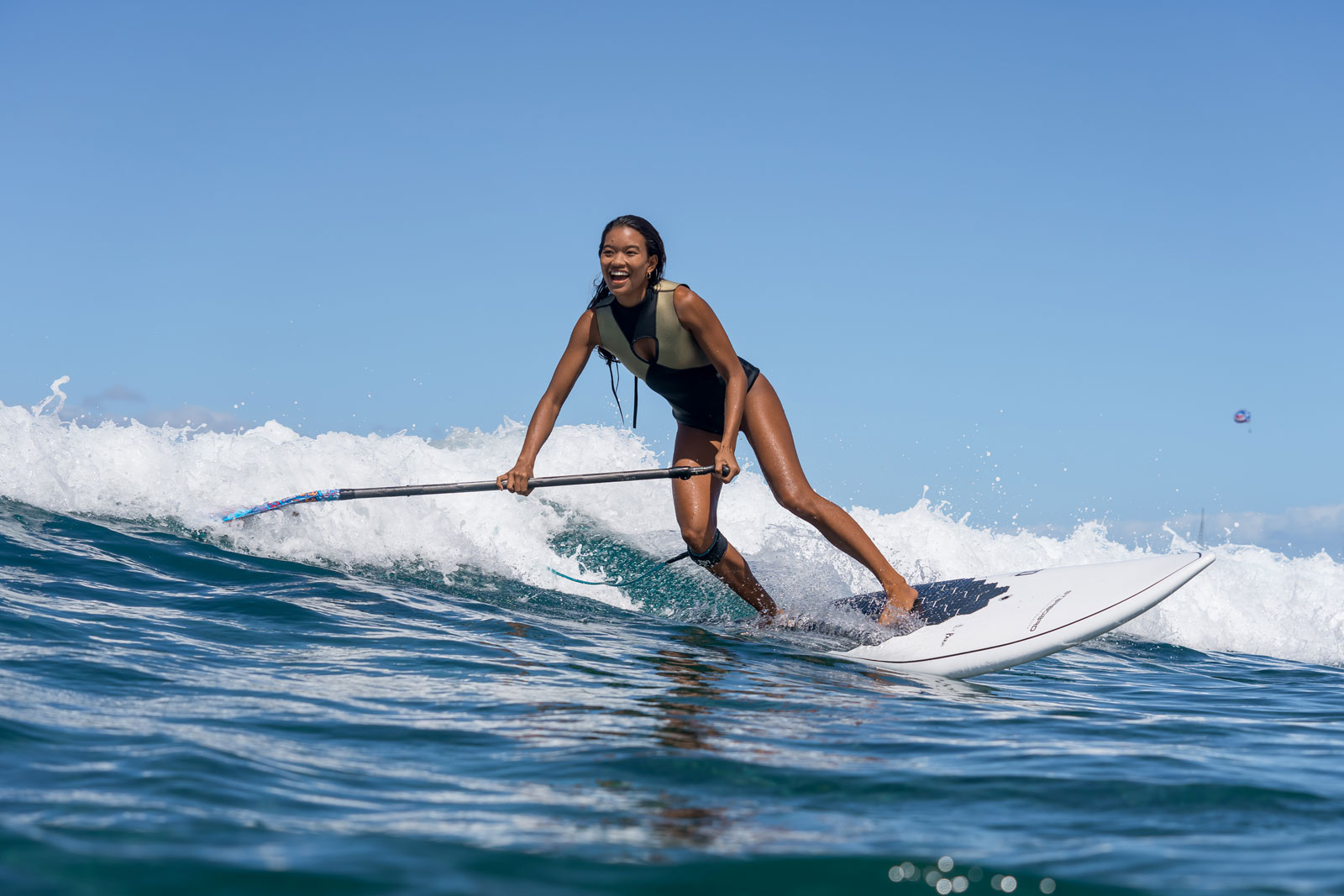
Paddle boarding is a fun and exciting way to enjoy the water and get some exercise. However, different water conditions can present unique challenges, and it’s important to know how to paddleboard in a variety of situations. In this article, we will discuss how to paddleboard in different water conditions.
Calm Water
Calm water is the easiest and safest condition for paddle boarding. It’s a great place to start if you’re new to paddle boarding or want to practice your skills. Here are some tips for paddle boarding in calm water:
Stand in the center of the board: When paddling in calm water, stand in the center of the board to maintain balance and stability.
Use a long, smooth stroke: Use a long, smooth stroke to propel the board forward. Plant the paddle in the water near the front of the board, and pull it back alongside the board.
Keep your eyes forward: Keep your eyes looking forward, not down at the board or the paddle. This will help maintain your balance and prevent falls.
Choose a relaxed pace: Paddling in calm water is a great opportunity to relax and enjoy the scenery. Choose a relaxed pace and enjoy the ride.
Choppy Water
Choppy water, or water with small waves, can be more challenging to paddleboard in than calm water. Here are some tips for paddleboarding in choppy water:
Stand in a wider stance: When paddling in choppy water, stand in a slightly wider stance to improve balance and stability. Keep your knees slightly bent to absorb the impact of the waves.
Use a shorter, quicker stroke: Use a shorter, quicker stroke to maintain your momentum in choppy water. Plant the paddle in the water closer to your body, and use a quicker cadence to keep the board moving forward.
Look ahead: Keep your eyes looking ahead, scanning the water for oncoming waves or other obstacles.
Avoid standing parallel to the waves: Try not to stand parallel to the waves, as this can cause the board to rock back and forth. Instead, stand perpendicular to the waves and use your paddle to stabilize the board.
Currents
Paddle boarding in currents can be challenging, as the current can carry you in unpredictable directions. Here are some tips for paddle boarding in currents:
Stand in a wider stance: When paddling in a current, stand in a wider stance to improve balance and stability. Keep your knees slightly bent to absorb the impact of the current.
Use a shorter, quicker stroke: Use a shorter, quicker stroke to maintain your momentum in a current. Plant the paddle in the water closer to your body, and use a quicker cadence to keep the board moving forward.
Angle the board into the current: Angle the board into the current at a slight angle to help you move forward. This will also help you maintain your balance and stability.
Use the shore as a guide: If possible, use the shore as a guide to help you navigate through the current. Aim for a specific point on the shore, and use your paddle to steer the board in that direction.
Windy Conditions
Paddle boarding in windy conditions can be challenging, as the wind can push the board off course and make it difficult to maintain your balance. Here are some tips for paddle boarding in windy conditions:
Stand in a wider stance: When paddling in windy conditions, stand in a wider stance to improve balance and stability. Keep your knees slightly bent to absorb the impact of the wind.
Use a shorter, quicker stroke: Use a shorter, quicker stroke to maintain your momentum in windy conditions. Plant the paddle in the water closer to your body, and use a quicker cadence to keep the board moving forward.
Turn your body into the wind: Turn your body into the wind to help stabilize the board. Use your paddle to steer the board in the direction you want to go.
Use the shoreline as a guide: Use the shoreline as a guide to help you navigate through the wind. Aim for a specific point on the shore, and use your paddle to steer the board in that direction.
Conclusion
Paddle boarding in different water conditions can be challenging, but with the right techniques and strategies, it can also be a lot of fun. When paddle boarding in calm water, use a long, smooth stroke and a relaxed pace. In choppy water, stand in a wider stance and use a shorter, quicker stroke. When paddle boarding in currents, angle the board into the current and use the shore as a guide. In windy conditions, turn your body into the wind and use the shoreline as a guide. With these tips in mind, you can paddleboard in a variety of water conditions and enjoy your time on the water.

